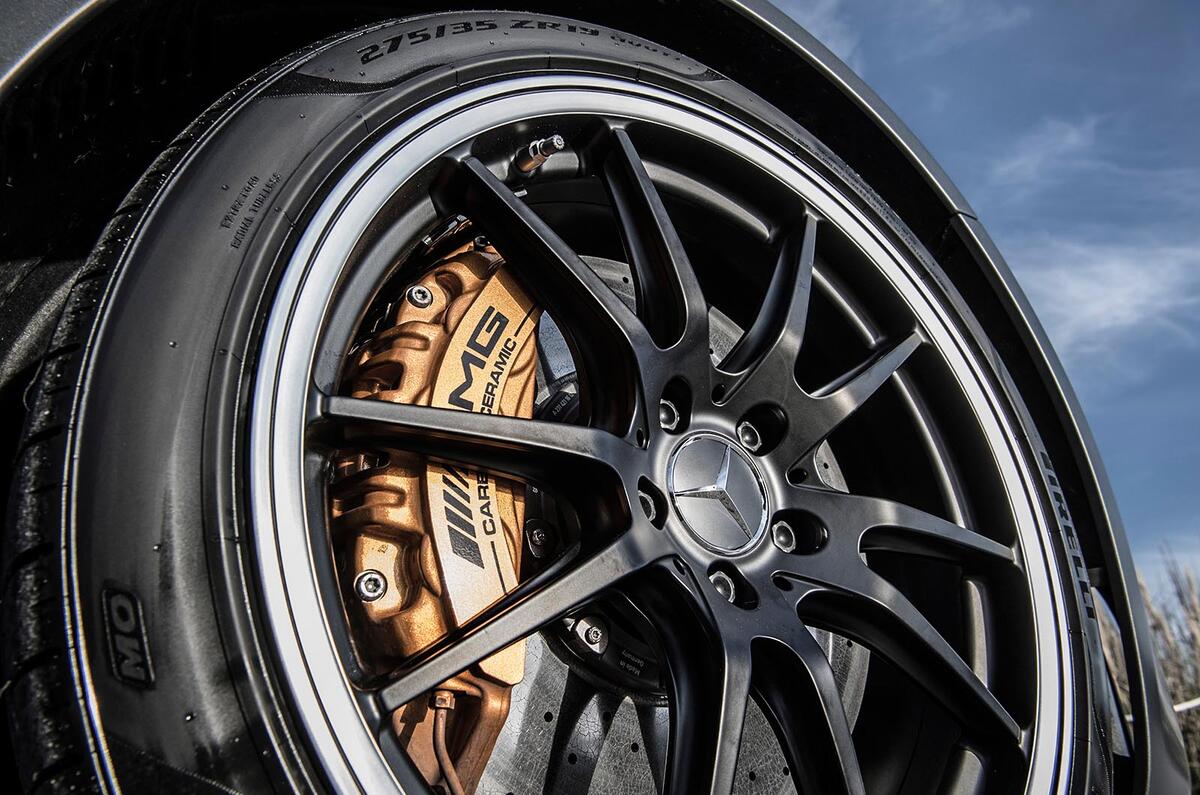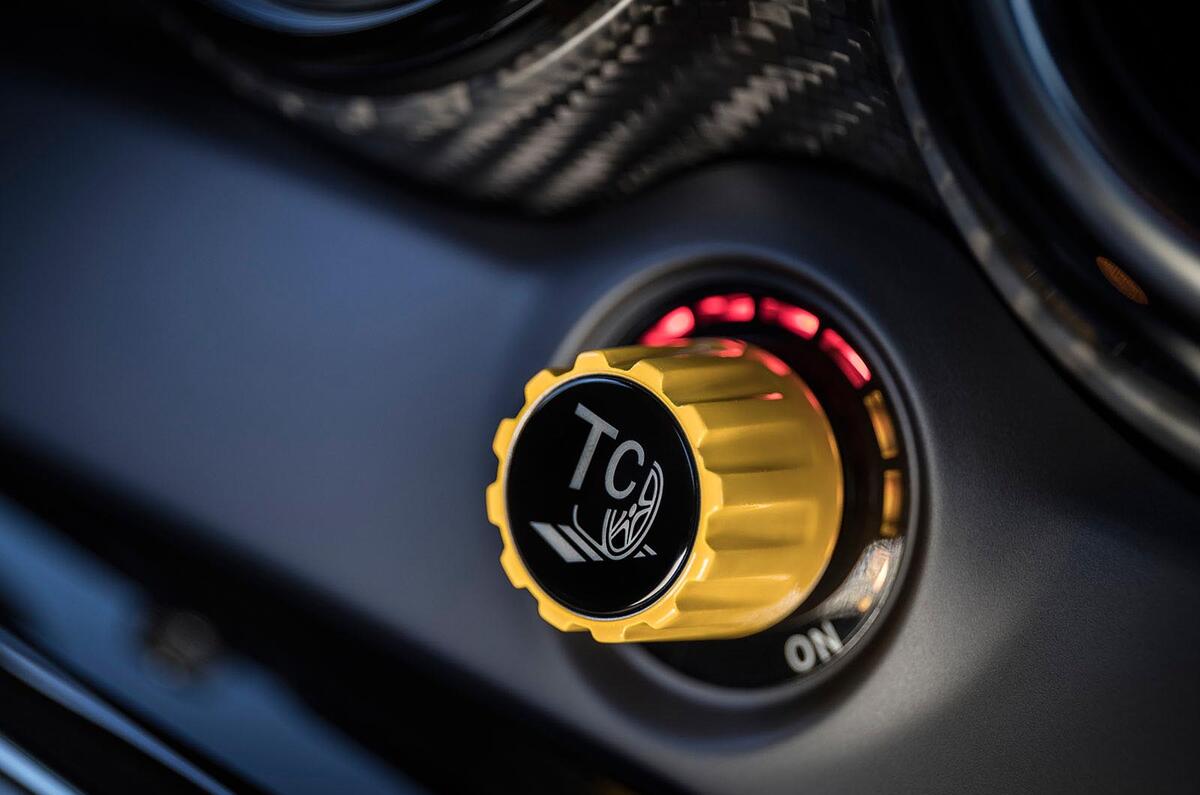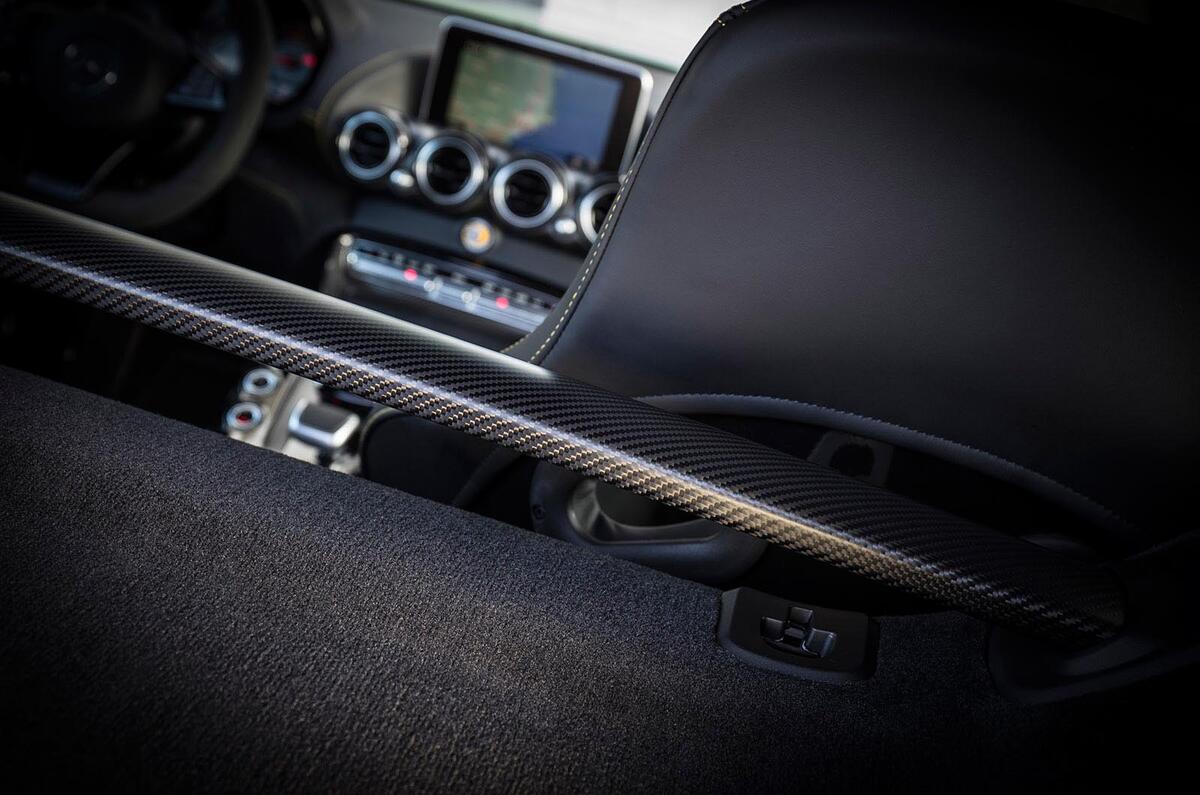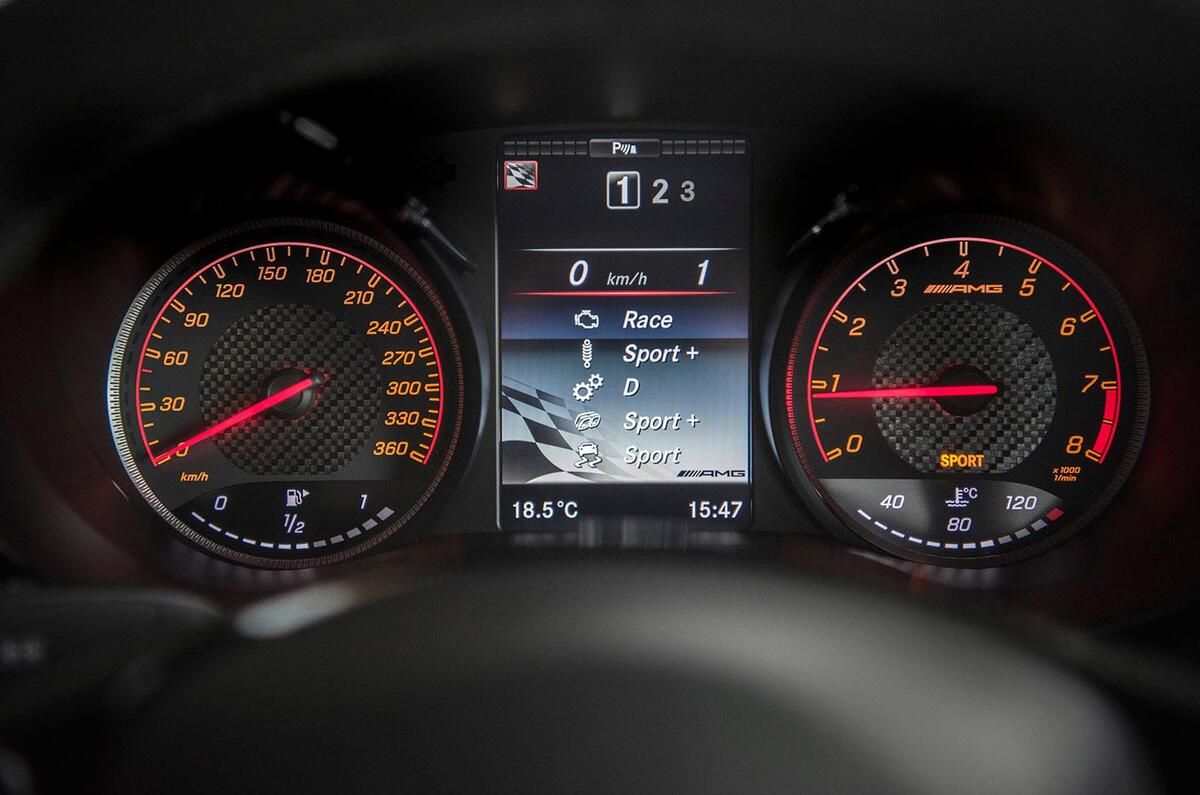http://www.autocar.co.uk/car-review/mercedes-amg/gt/first-drives/2016-mercedes-amg-gt-r-review
What is it?
Here's as sure a sign as you’ll get this side of its new, Formula 1-powered hypercar that Mercedes-Benz in general and its AMG division in particular are getting very serious indeed about their high-performance weaponry. The new Mercedes-AMG GT R may not be the most powerful car in AMG history and even at £143,245, it remains some distance from the most expensive, but for sheer, naked aggression and laser-like focus on the driving experience, it represents a new level for the company.
Think of it relative to a Mercedes-AMG GT S as you might a Porsche 911 GT3 to a 911 GTS. One changed letter, one entirely transformed car.
We’ll start with the body and structure, where carbonfibre construction for the front wings, rear spoiler, torque tube and roof plus some additional underbody bracing make the car both lighter and stiffer. The chassis has wider tracks, coilover suspension units, bespoke spring, damper and anti-roll bar settings, and vastly fatter tyres – the rears are 325/30 ZR20s – not to mention Mercedes’ first use of active rear-wheel steering, programmable nine-stage traction control, optional forged, implausibly lightweight aluminium wheels and colossal (and also optional) carbon-ceramic brakes.
Less has changed under the bonnet, but new turbochargers, a revised compression ratio and fresh mapping still manage to add a further 75bhp to the 4.0-litre V8’s output, to bring the total to 577bhp, with a chunk of additional torque too. The seven-speed dual-clutch automatic gearbox is retained, but with a longer first gear, a shortened seventh and an overall reduction in the final drive ratio.
In aerodynamic terms, an invisible deployable front lip spoiler, a double rear diffuser and an adjustable rear wing not only provide meaningful downforce but, impressively, manage to do so while improving drag.
What's it like?
Not for the first time, the pinnacle product of an AMG supercar line – the one that should have you quaking in your boots – is the one that turns out to be not just the fastest but also, by some margin, the easiest to drive. When the GT S took part in our annual competition to find Britain’s Best Driver's Car in 2015, its edgy handling came as a something of a disappointment.
But just as the Black Series SLS was by some distance the most forgiving SLS, so its AMG GT R descendant has pulled the same trick again. It’s no pussycat and remains more challenging on the limit than a lot of mid-engined exotica such as the Ferrari 488 GTB and McLaren 570S, but the crucial difference with the GT R relative to the GT S is that the effort required to drive it really fast is more than matched by the reward.
And it is really fast. Eye-poppingly so. The response from the tuned V8 is little short of brutal, almost regardless of the revs on the clock, as is the sound. Indeed, one way the GT R can be best enjoyed is to put the transmission into manual, hook a high gear at really low revs and see just how flexible the engine really is and hear just how fabulous its barrel-chested growl is at such revs. Good though the Ferrari and McLaren are, with their flat-plane cranks, they can’t do this.
The GT R's problem is that while Mercedes-AMG has provided it with the iron-fisted body control such a car clearly needs, it has not been able to do so while retaining the at times eerily good ride quality of its mid-engined rivals. AMG proudly states that most of the car’s development has taken place on the Nurburgring and, frankly, that’s how it feels. Even in comfort mode, the suspension was firm enough on the roads of the Algarve to make me wonder how it might fare in the probably more challenging environment back home.
Find a smooth stretch, however, and the GT R proves it has all the grip, the turn-in immediacy and traction of those that put their engine behind the driver. You learn to apply the power earlier and earlier in corners, barely believing how much the rear axle will transmit to the road without complaint.
But for all its extra power and pace, it is its behaviour at track speeds that really sets the GT R apart from lesser GT coupés. You need to dial your brain in to the speed of the steering response – the car would be further improved by a slower rack - to quell the temptation to over-correct each slide, but once you've done so, the car is a joy to drive fast.
All the excesses of the GT S chassis have been trimmed away and discarded. Despite travelling at an altogether different rate, the GT R does less of everything: less understeer on turn-in, less oversteer at the exit and all with far greater progression and accuracy. It will let you clean up your lines with the throttle and, should you so choose, drift cleanly. Mercedes-AMG says it’s not that kind of car but, instead, a precision track tool, and I understand where it’s coming from, but should it ever step out of line even by chance, it’s nice to know you’re not going to be all arms and elbows getting it back.
Should I buy one?
You should drive the GT R on representative roads before you make the decision to buy one. If you can live with a ride that is very firm but not overly harsh, and if you can stomach the price, the rest is all good news. The GT R represents every bit as large a step over the GT S as the £30,000-plus price disparity and its immense specification suggests. And it would have been so easy for Mercedes just to make this car faster; far more impressive is the fact that it’s been made so much better too.
You might prefer to drive a 911 GT3 RS on the track or a McLaren 570S on the road, but if you like the idea of a state-of-the-art sports car but traditionally configured with a thundering V8 at one end and its driven wheels at the other, the GT R will deliver on the promise of its outlandish appearance, and do so in spades.







